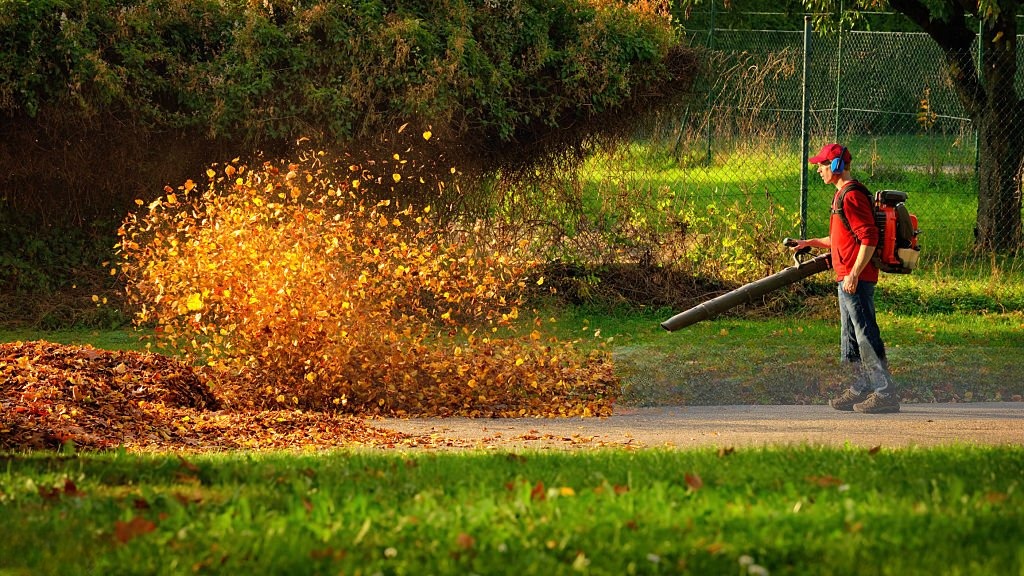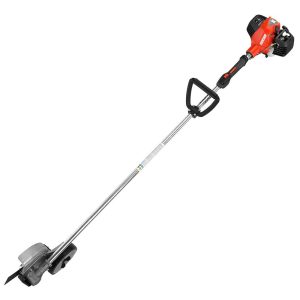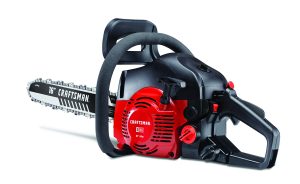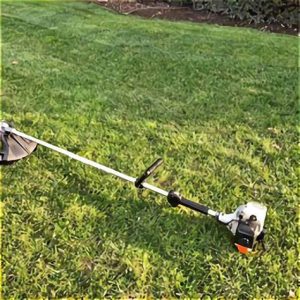Here Are the Top 14 Causes Your Craftsman Leaf Blower Won’t Turn On
You can use a leaf blower for more than just clearing leaves from the grass; you can also use it to clean the patio, dry up the lawnmower, and more. If you can’t get things going, there’s no point in doing it.
A Craftsman leaf blower won’t turn over if the choke is set incorrectly, the air filter is clogged, the fuel line is clogged, the carburetor is dirty, the fuel filter is clogged, the vent in the fuel tank is clogged, the ignition coil is defective, the recoil starter is worn out, the spark arrestor is clogged, or the fuel is old.
Read on to learn about some other potential factors that could be preventing your Craftsman from starting. Please observe the precautions outlined in the Craftsman manual. Removing the spark plug wire and waiting the engine to cool down are two examples.

Table of Contents
Causes of Craftsman Leaf Blower Not Turning On
When normal maintenance elements on a Craftsman blower aren’t replaced as needed, the blower may not start.
The spark plug, and fuel filter, air filter are all parts that need to be replaced on an annual basis.
A failure to start is caused by the incorrect setting of the choke on a Craftsman blower.
Locate the source of the airflow problem first. The airflow can be limited by utilizing the choke. To fire up a cold motor, you have to put the choke lever in the “start” position.
As a result, less air will be allowed to enter the carburetor. It takes less air to start a cold engine since more gas is injected into it.
Once the engine has warmed up, the choke should be disengaged by moving the lever to the run position. For the sake of keeping the engine from overheating, this is done.
Techniques for Getting a Craftsman Leaf Blower Started:
Keep depressing the purge bulb until fuel starts filling it. The choke must be closed at the outset, therefore move the lever to the “start” position. It will sound like the engine is going to start running once you pull the starter handle a few times.
Halfway between the start (closed) and run choke (open) positions on the choke lever. The engine can be started by pulling the starter handle.Put the lever in the open position once the engine is at operating temperature.
A chilly Craftsman leaf blower won’t start until the choke is closed first, and the same blower won’t operate if the choke is opened before use.
Craftsman Blower Won’t Start Due to Clogged Air Filter
The air filter’s primary function is to prevent damage to the engine by removing debris from the air entering the combustion chamber. Airborne particles are blocked by the air filter.
Eventually, the filter will become so clogged with dirt that it will prevent enough air from reaching the engine to keep it running. Your Craftsman leaf blower won’t work because there isn’t enough air.
I suggest swapping out the filter every year to keep it in good working order. Regularly inspect and clean the filter throughout the year.
A filthy or damaged air filter should be replaced.
- To clean the primary foam air filter on a Craftsman blower, you need to take it out of its housing and brush off the dust and debris.
- Clean the air filter housing and cover with a damp cloth.
- If the air filter appears to be severely soiled or broken, you should get a new one. You can clean it up if it’s in decent enough shape.
- Do a quick wash in a solution of gentle dish soap and water. The water should be clear after rinsing. Lay the filter flat to dry after squeezing out the excess water.
- Spray a thin layer of SAE30 motor oil on the dry surface. Remove the filter’s oil buildup by squeezing it.
- Put the filter back in place.
- Do not clean or oil the pre-filter if the blower requires one.
A Craftsman Blower Won’t Start Because of the Wrong 2-Cycle Oil Mix
The fuel-to-oil ratio for a Craftsman 2-cycle leaf blower is 50:1. It wouldn’t be possible to run the engine without the oil’s lubricating properties.
To keep your blower in top working order, you should never use regular gas. Low gas pressure causes the engine to seize. It’s usually more cost-effective to buy a new leaf blower than try to fix the one you broke.
Using unleaded gasoline with an octane level of 89 or higher (mid-grade) and no more than 10% ethanol will ensure that your Craftsman blower runs smoothly at the recommended 50:1 fuel mix ratio.
Put in some ISO-L-EGD and JASO M345 FD approved 2-cycle premium oil or a comparable 2-cycle oil. Both universal 2-cycle oil and full-synthetic 2-cycle oil are available from Craftsman.
50:1 = 1 gallon of gas + 2.6 fl oz. 2-cycle oil
50:1 = 2.5 gallon of gas + 6.4 fl oz 2-cycle oil
Pre-mixed fuels, like TruFuel, are a terrific way to cut down on fuel-related issues and keep your engine running for longer. Ready to be poured into your leaf blower’s fuel tank, this oil and gasoline blend does not include ethanol.
A lack of fresh fuel and oil prevents the Craftsman blower from starting.
If you let your Craftsman leaf blower’s fuel sit for too long, you may have trouble starting it. This is because, after 30 days, gas begins to degrade.
Ethanol is commonly found in gas. Ethanol is a biofuel derived from corn and other high-starch plants. It’s mixed with gas to make the fuel slightly less harmful to the environment.
Although running your Craftsman blower on ethanol may help the environment, it is not recommended.
Gummy deposits and increased moisture content in the gasoline are only two of the ways in which ethanol negatively impacts the fuel system and its components.
For example, if the fuel has degraded and left a varnish, the engine may not receive enough fuel to activate the blower.
Do not use fuel with an ethanol level more than 10% due to the ethanol’s detrimental effects. Do not use E15 or E85 fuels, as they can include up to 15% and 85% ethanol, respectively.
If you plan on using your Craftsman leaf blower after the fuel has been sitting for more than 30 days, you should drain the tank and refill it with new gas and oil.
In order to prevent the fuel from going bad, clean the fuel system, and lower the amount of moisture in the fuel, you need use a fuel stabiliser like Sea Foam Motor Treatment.
An unstartable Craftsman blower was traced to a dirty spark plug.
A lack of spark might keep the blower from starting if the spark plug was unclean and had a buildup of carbon or grease. Incorrect electrode gap, loose wire, cracked porcelain, and burnt electrodes are also potential causes.
Check the spark plug by removing it. If your spark plug is dirty or broken, you should get a new one. Gap the spark plug according to the manufacturer’s instructions, and be sure to fasten the boot tightly.
The spark plug can be cleaned with a wire brush if it seems to be in good condition other than being somewhat filthy.
A clogged fuel filter is to blame for a Craftsman blower’s inability to start.
The fuel filter serves a similar function to the air filter in that it keeps debris out of the fuel system.
A Craftsman leaf blower’s fuel filter is hooked to the fuel line within the fuel tank. In order to prevent the gasoline line from being contaminated by dirt and debris from the fuel tank, this device strains the fuel as it enters the fuel line.
The typical homeowner should also replace this filter once a year. Follow these directions to check and replace your gasoline filter:
How to change the fuel filter on a Craftsman leaf blower:
- When removing the gasoline cap, be sure to wipe the area surrounding it to prevent any debris from going into the tank.
- Get rid of the gasoline cap.
- Hook the fuel line with a clean bent wire, then remove the fuel filter from the tank.
- While keeping the fuel line and ring clip firmly in one hand, remove the filter from the fuel line using the other.
- After ensuring the ring clip is firmly fastening the fuel line to the filter, put the male end of the new fuel filter into the fuel line.
- After installing the filter, replace the gasoline tank’s cap.
Inability to Start Craftsman Blower Due to Broken Primer Bulb
If the primer bulb is cracked and won’t take fuel, the engine won’t be able to get gas to the carburetor. You need to get a new priming bulb.
An obstruction in the fuel line prevents the Craftsman blower from starting.
Sticky deposits left behind by old fuel might clog up your Craftsman leaf blower and prevent it from working. You should change out the leaf blower’s fuel line if it is damaged in any way (cracked, kinked, or blocked).
A Craftsman Blower Won’t Start Due to a Clogged Vent in the Fuel Tank
An air vent in the gas tank lets fresh air into the container. If your Craftsman gas tank doesn’t have a vent, the fuel will sit there forever.
If your leaf blower works for a time but then loses power, shuts off, and won’t start again unless you unscrew the fuel cap to let air into the tank, this could be a sign of a fuel tank vent problem.
If you listen closely, you can probably hear the suction being let out as you take off the top.
After a few minutes of operation with the gas cap in place, it turns off again. There is a fuel tank vent attached to a fuel line.
When the old cap stops venting properly, you’ll need to replace the gasoline tank vent.
The inability to start is traced to a dirty carburetor on the Craftsman blower.
A carburetor controls the ratio of fuel to air for combustion in the cylinder. The carburetor will stop working properly if you use old gas, which will cause gumminess and clogging.
You ought to be capable of cleaning your carburetor if you have a basic understanding of mechanics. Remove the carburetor and clean it with special carburetor cleaning.
If the carburetor still doesn’t work after being cleansed, you might have to repair it or get a new one.
Repair shops for small engines will also cleanse it for you. However, you should inquire as to the price of cleaning the carburetor in terms of both time and money. That’s like saying you need a new carburetor. There might not be a significant price difference.
Due to a defective recoil starter, a Craftsman blower will not turn on.
When you want to get your Craftsman blower going, all you need is a good recoil to get it going. If the string comes untied, it can be difficult to get going again. Recoil starts can also fail due to a faulty pulley, a missing or loose spring, or broken clips.
If the recoil spring is broken, you can try to replace it and restring the device. If the pulley or clips in your recoil are broken, the whole assembly may need to be replaced if the mechanism is not working.
The Craftsman Blower Won’t Start Due to a Faulty Ignition Coil
It’s possible for the ignition coil’s winding to come loose, which would cause it to short out. Because of this, the spark plug will not receive the proper voltage to produce a spark. Your Craftsman blower won’t turn on as a result.
Use an ohmmeter to look for a discontinuity in the circuit to locate a faulty ignition coil. If you detect a crack in the ignition coil, you should replace it.
If the Spark Arrestor on your Craftsman blower is plugged, you won’t be able to start it.
A small screen, the spark arrestor is easily clogged with soot. As airflow is restricted by the clogged spark arrestor, the leaf blower may not start.
Spark arrestor needs to be taken apart and cleaned using a wire brush. Get a new spark arrestor if cleaning the old one doesn’t help.
The Craftsman Blower Won’t Start Because It Got Wet
The Craftsman engine may have flooded after you attempted to ignite it. Such an occurrence is possible if the starter rope was pulled an excessive number of times while the choke was closed.
It can also occur if the priming bulb is pushed too several times or the starter rope is pulled repeatedly when the switch is off.
Repairing a Craftsman Leaf Blower With a Frozen Engine
- To activate, simply flip the switch.
- Set the choke to “run” (open) by shifting the lever.
- Repeatedly pull the starter rope and press the throttle trigger to start the engine. There may be a delay of up to fifteen pulls before this begins. First, the motor on your leaf blower will splutter. To start, keep pulling for another two or three times.







